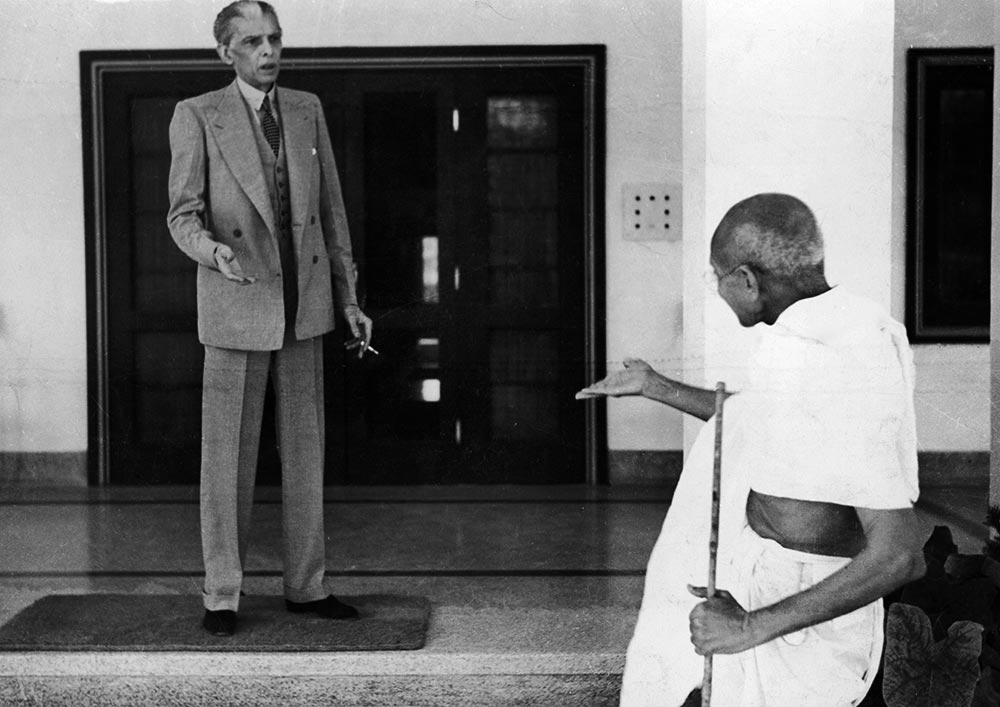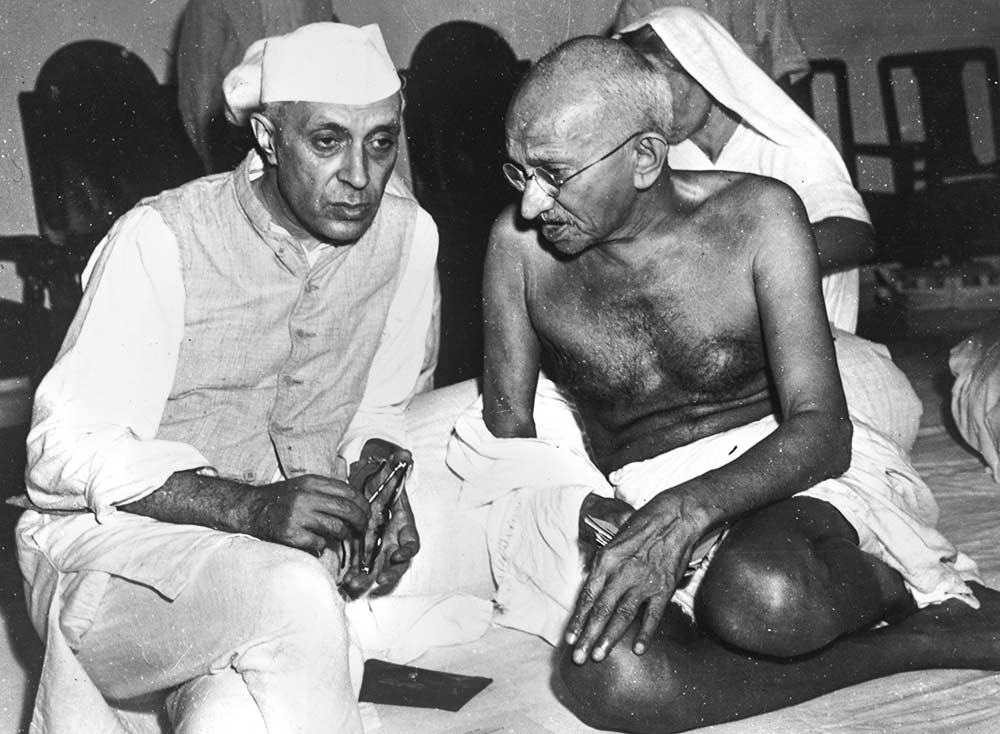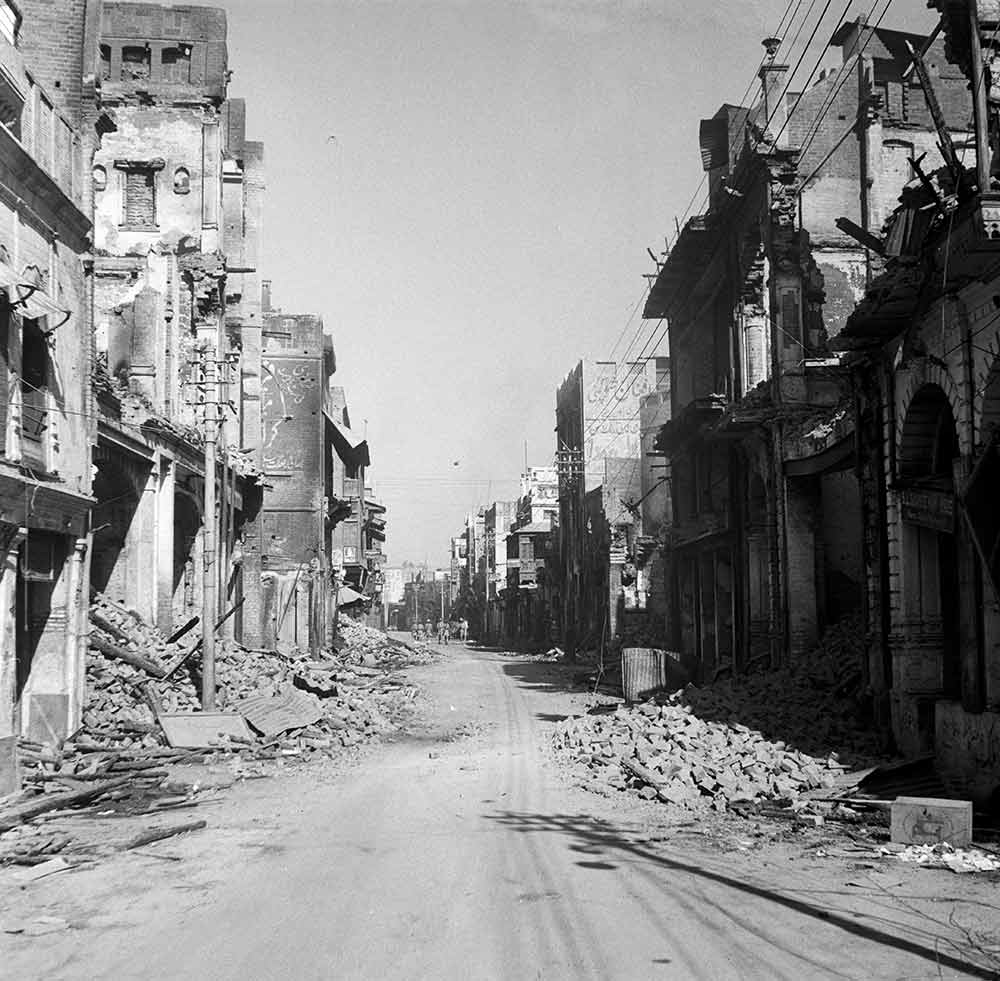Seventy-three years ago, at the stroke of the midnight hour, a nation was born.
India's struggle for freedom is one of the most unique and compelling stories of the 20th century.
As we celebrate this momentous occasion, some photographs etched in history.
Please click on the images for high-resolution photos

Mahatma Gandhi and Sarojini Naidu, with a garland, during the Salt March protesting against the government monopoly on salt production in 1930.
The Salt March also known as the Dandi March was an act of civil disobedience led by the Mahatma.
Thousands of Indians followed him from Ahmedabad to the coast, a distance of some 240 miles.
The march resulted in the arrest of nearly 60,000 people, including Gandhi.
Britain had kept India's salt trade under its thumb since the 19th century, forbidding natives from manufacturing or selling it and forcing them to buy it at high cost from British merchants.
Since salt was a nutritional necessity , Gandhi saw the salt laws as an inexcusable evil.
Photograph: Keystone/Getty Images

Gandhi, Netaji Subhas Chandra Bose and Sardar Vallabhbhai Patel during the 51st Indian National Congress.
Photograph: Keystone/Getty Images

Gandhi leaves the home of Muhammad Ali Jinnah, founder of the Muslim League, en route to the Viceroy's Lodge in Delhi on November 24, 1939.
Jinnah had originally been dubious about the practicability of Pakistan, an idea that the poet and philosopher Muhammad Iqbal had propounded to the Muslim League conference of 1930, but before long he became convinced that a Muslim homeland on the Indian subcontinent was the only way of safeguarding Muslim interests and the Muslim way of life.
Thus, the birth of Pakistan and Partition.
Photograph: Kulwant Roy/Topical Press Agency/Hulton Archive/Getty Images

Gandhi leaves Maor Ville, his Simla residence, during the Leaders Conference in 1942.
He is helped to his car by his physician Dr Sushila Nayyar.
Photograph: Fox Photos/Getty Images

Gandhi and Jawaharlal Nehru deep in conversation at the All-India Congress Committee meeting in Bombay in 1942.
Photograph: Central Press/Getty Images

June 3, 1947, at a conference in New Delhi, Lord Louis Mountbatten, the last British viceroy of India, disclosed Britain's partition plan for India to Nehru and Jinnah.
Photograph: Keystone/Getty Images

Mountbatten, his wife Edwina and Jinnah at the Viceroy's House, now Rashtrapati Bhavan, April 9, 1947.
Photograph: Keystone/Hulton Archive/Getty Images

The presentation of colours to the Bombay Home Guard, part of the celebrations of Independence Day in Bombay.
B G Kher, the Bombay Premier, salutes the flag.
Photograph: Keystone/Getty Images

Indians, free at last from the yoke of British rule, celebrate Independence in Calcutta.
Photograph: Keystone/Getty Images

Nehru delivers his Tryst with Destiny speech, one of the greatest speeches of the 20th century.
Photograph: William Stacey/Fox Photos/Getty Images

One of the 30 special trains leaving New Delhi station which took Pakistan government staff to Karachi.
Muslim League guards stand to attention in honour of the departure.
Photograph: Keystone Features/Getty Images

The burned-out Hall Bazaar shopping street after communal riots in Amritsar during Partition.
Fighting took place between the city's Muslim population (around 50 per cent), anxious for Amritsar to be incorporated into Pakistan, and the other, Sikh and Hindu, half of the inhabitants, who supported incorporation with India.
Photograph: Keystone Features/Hulton Archive/Getty Images










